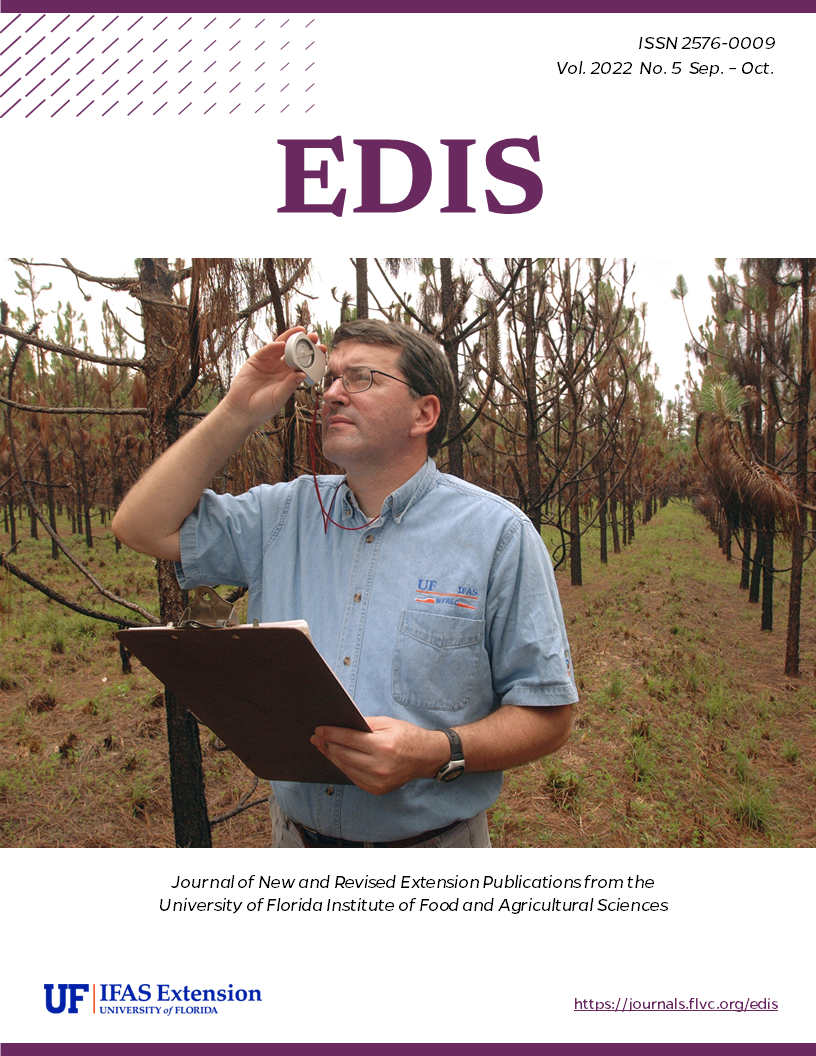Abstract
Florida landowners have contributed vastly to the Southeast’s planting of pines over many decades; recent incentive programs across the state have encouraged further interest. Understanding the factors that affect seedling quality and survival of native pine species will assure a more successful and productive forest plantation. This publication reviews each southern pine's important silviculture characteristics, soil-site conditions, and potential markets and products. It outlines planting standards and techniques as they relate to landowners’ objectives and their target markets. It is to be used as a guide to facilitate selection of appropriate pine species and offers guidance on best practices for handling seedlings throughout all stages of tree planting.
References
Balmer, W. E., and H. L. Williston. 1974. Guide for Planting Southern Pines. Department of Agriculture, Forest Service, Southeastern Area, State and Private Forestry.
Barry, J. E. 2010. Storing, handling and planting southern pine seedlings. https://www.uaex.uada.edu/environment-nature/forestry/managing-woodlands/FSA-5007.pdf
Collins, M. E. 1985. Key to Soil Orders in Florida. Fact sheet SL-43. Soil and Water Science Department, Florida Cooperative Extension Service, Institute of Food and Agricultural Sciences, University of Florida. First published: August. http://ufdc.ufl.edu/IR00003421/00001
Ezell, A. W., D. J. Moorhead, and A. J. Londo. 2001. “Planting Southern Pines: A Guide to Species Selection and Planting Techniques.” Mississippi State University Extension Service, Publication 1776. 15p.
Gilman, E, D. G. Watson, R. W. Klein, A. K. Koeser, D. R. Hilbert, and D. C. McLean. 2019a. “Pinus taeda: Loblolly Pine.” ENH-637. EDIS 2019. https://edis.ifas.ufl.edu/publication/ST478.
Gilman, E, D. G. Watson, R. W. Klein, A. K. Koeser, D. R. Hilbert, and D. C. McLean. 2019b. “Pinus elliottii: Slash Pine.”ENH-622. EDIS 2019. https://edis.ifas.ufl.edu/publication/ST463.
Londo, A. J., and S. G. Dicke. 2005. Measuring Survival and Planting Quality in New Pine Plantations. Southern Regional Extension Forestry, University of Georgia. https://www.srs.fs.usda.gov/pubs/gtr/gtr_se057.pdf.
Matney, T. G., and J. D. Hodges. 1991. “Evaluating Regeneration Success.” In Forest regeneration manual (pp. 321–331). Springer, Dordrecht. https://doi.org/10.1007/978-94-011-3800-0_18.
Mylavarapu, R., W. Harris, and G. Hochmuth. 2019. “Agricultural Soils of Florida.” SL-441. EDIS 2019. https://edis.ifas.ufl.edu/publication/ss655.
Nadel, R. L., S. Enebak, and B. Barlow. 2020. “Planting Southern Pine Seedlings.” Alabama Cooperative Extension System. https://www.aces.edu/blog/topics/forestry/planting-southern-pine-seedlings/.
South, D. B., J. N. Boyer, and L. Bosch. 1985. “Survival and Growth of Loblolly Pine as Influenced by Seedling Grade: 13-Year Results.” Southern Journal of Applied Forestry 9 (2): 76–81. https://doi.org/10.1093/sjaf/9.2.76.
Taylor, E. L., M. Blazier, and A. G. Holley. 2007. “New Pine Planting Strategies for the Western Gulf States.” In: National Proceedings: Forest and Conservation Nursery Associations-2006. Edited by L. E. Riley, R. K. Dumroese, and T. D. Landis, Proceedings RMRS-P-50. Fort Collins, CO: US Department of Agriculture, Forest Service, Rocky Mountain Research Station. p. 104–109. https://www.fs.usda.gov/treesearch/pubs/30899.
Wakeley, P. C. 1954. Planting the southern pines (No. 18). Forest Service, US Department of Agriculture.

